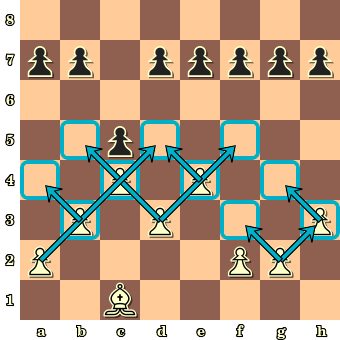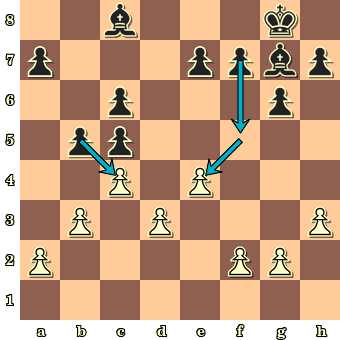Yep.
https://www.amazon.com/Understanding-Sicilian-Mikhail-Golubev/dp/1911465104
Do you know if it's a book that deals with all the positional key features of the opening? In a way like this about the positional treatment of the Rossolimo:



I ask this question because I'm not looking for a repertoire book but for an explanation book about the Sicilian.
You're asking a lot from a book.
Why does it have to be book on the entire Sicilian?
There are books, videos, and/or websites you can get for specific variations.
I'm not looking for books about one specific line. I want to develop a thorough understanding of the opening as a whole, starting from the very basics. The problem with the books that I consulted is that they already assume that you understand much of the important positional key ideas as standard knowledge. And they limit their discussion about it to just a few sentences or words like "typical" or "characteristic".
The number of books on the Sicilian that I consulted to find what I'm looking for goes far into the double digits. And none of the books that I consulted gives black's strategical key move the attention that it deserves. I'm asking if there is a book out there that does. Because if not, then I've got work to do.
Too many variations with totally different ideas. Yes it would be nice to have it in 1 book nicely categorized but then it might as well be for all openings. Our resident IM with opinions, @pfren, has over time made very Illuminating comments on different aspects of it - perhaps asking him might help.
All of these illustrations you want, in one book covering everything isn't very feasible.
You say the "basics" is what you want, yet "typical" isn’t good enough.
Have you looked at "Starting Out: The Sicilian Defence"?
Yes.
"Typical" isn't nearly enough coverage for the key idea that almost the whole strategic battle from the opening revolves around. No matter if you play the ((Hyper-)Accelerated) Dragon, the Sveshnikov, the Taimanov, the Kan, the Najdorf, the Scheveningen, the Classical, the Closed, the Grand Prix, the Rossolimo, the Smith-Morra, or Wing variations of the Sicilian: there are ideas that link them all together. To really understand the Sicilian as a whole or any of its variations, there is much ground to cover before going into the specifics of the opening lines.
One idea:
If you don't understand the basic strategies of the Sicilian you might not understand that white made two inaccuracies with 5. Bd3 and 6. c3, and then you might miss the opportunity here to flood the center with 6... e5! followed by a quick ... d5.
The one book that I found most valuable in understanding the Open Sicilian (with 3. d4 by White) was "Winning with the Sicilian," by Mark Taimanov. He chronicled his own experience with the Sicilian and the eventual evolution of his own system. He began, as a young player, with the Boleslavsky variation, then progressed to the Paulsen variation, and finally created his own, "Taimanov System."
The value in the book, is not so much the detailed lines in each of the three variations, but the stragetic decisions Taimanov made in his progression.
The book is out of print, of course -- I found it in a remainder bin for $4.98, but it's rarity makes it a costly purchase on Amazon.
As for all the "anti-Siclians," good luck. The variance of all those lines prevents me from rarely playing 1.... c5 in response to e4.
The book is out of print, of course -- I found it in a remainder bin for $4.98, but it's rarity makes it a costly purchase on Amazon.
There are a couple of inexpensive copies available on abebooks.com.
Edit: any time a book is too expensive on amazon, I check thriftbooks.com, bookdepository.com, and abebooks.com. It doesn't always work out, but those sites are worth a try.
The book is out of print, of course -- I found it in a remainder bin for $4.98, but it's rarity makes it a costly purchase on Amazon.
There are a couple of inexpensive copies available on abebooks.com.
Edit: any time a book is too expensive on amazon, I check thriftbooks.com, bookdepository.com, and abebooks.com. It doesn't always work out, but those sites are worth a try.
Good catch. The book (Winning with the Sicilian) is really valuable to anyone trying to figure out any opening, and why some, seemingly minor moves, make a significant difference in variations.
You're asking a lot from a book.
Why does it have to be book on the entire Sicilian?
There are books, videos, and/or websites you can get for specific variations.
I'm not looking for books about one specific line. I want to develop a thorough understanding of the opening as a whole, starting from the very basics. The problem with the books that I consulted is that they already assume that you understand much of the important positional key ideas as standard knowledge. And they limit their discussion about it to just a few sentences or words like "typical" or "characteristic".
The number of books on the Sicilian that I consulted to find what I'm looking for goes far into the double digits. And none of the books that I consulted gives black's strategical key move the attention that it deserves. I'm asking if there is a book out there that does. Because if not, then I've got work to do.
But what they are saying is that the Sicilian is too broad of a subject to expect a book to cover it all.
Some books, like "Sicilian Attacks", have to strictly with plans based on pawn structure, like the d6-e5 center can come from the Najdorf, Sveshnikov, etc.
If you are looking to play the Sicilian, figure out which variation. Many of them have a book in the "Starting Out" series that has explanations, not reams of lines. For example, there's Starting Out: The Sicilian Scheveningen. Another on the Dragon in the Starting out Series. Another on the Closed Sicilian. Another, I believe, on the Najdorf Sicilian, etc.
That's where you want to be looking.
Is there a book that explains the Sicilian in a way that its readers can read point for point what the opening is about?
Hi Sarah,
I can recommend « How to play the Sicilian defence » by D.N. Levy and K.J.O’Connell (B.T. Bastford Limited, 1978 ). Maybe you should give it a try ? Regards, François
I've been playing the Najdorf, the Accelerated Dragon, the Sveshnikov and now learning the Taimanov better. Color complexes, complementing strategies and positional keys are ideas that I had to find out from between the lines, and they are very often the same ideas no matter what Sicilian you play.
Maybe "How to play the sicilian defense" by Levy/O'Connell might be okay. It contains no concrete variantions but descreptions of typical plans and pawn-breaks. It is quite old (my exemplar is from 1979) so don't look for Alapin-Variation etc. ;-)
Is there a book that explains the Sicilian in a way that its readers can read point for point what the opening is about?